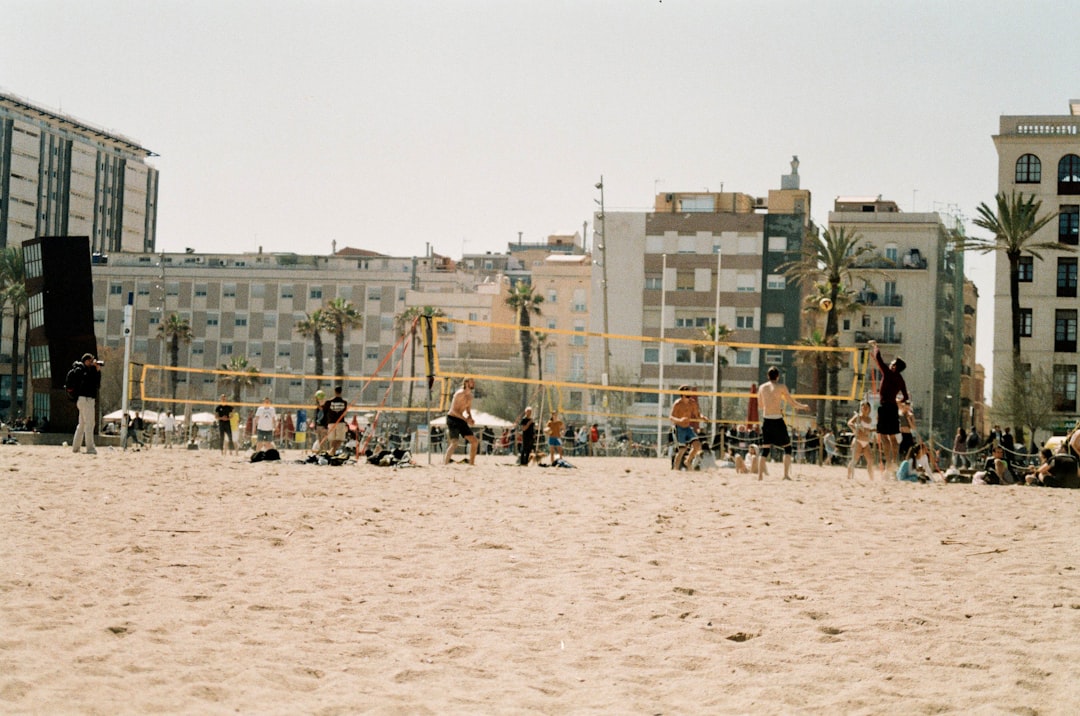Play Together, Learn Together: Team Building for Kindergartners
Team building activities for kindergartners are a wonderful way to nurture essential skills like teamwork, communication, and creativity from an early age.

Team building activities for kindergartners are a wonderful way to nurture essential skills like teamwork, communication, and creativity from an early age. These activities, such as building simple structures with blocks or telling stories in groups, offer more than just fun—they lay the foundation for lifelong social and emotional growth. By engaging young learners in exercises like musical chairs and collaborative art projects, you can help them learn to listen, share, and express themselves in imaginative ways.
At Give River, we believe in creating fulfilling and positive environments for social growth. Our mission is to transform workplace culture through gratitude, gamification, and generosity, and we understand the value of team building activities in nurturing teamwork from an early age. Join us in fostering an inclusive and supportive environment for kindergartners, setting the stage for their future success.

Benefits of Team Building Activities for Kindergartners
Team building activities for kindergartners are more than just play; they are foundational experiences that nurture essential skills for young children. These activities are instrumental in developing social-emotional skills, fostering cooperation, and enhancing problem-solving abilities.
Social-Emotional Skills
In kindergarten, children begin to engage with peers outside their family circle. Team building activities are vital in helping them cultivate empathy and understanding. For instance, when children collaborate on a group art project, they learn to value diverse perspectives and celebrate each other's creativity. This process builds a sense of belonging and community.
Research indicates that children who participate in these activities are more likely to develop robust social skills, which are crucial for future success.

Cooperation
Cooperation is another significant benefit of team building activities. When kindergartners collaborate on tasks like constructing a block tower or organizing a birthday line-up, they learn the importance of sharing and taking turns. These activities demonstrate that success often requires the collective effort of the group.
Consider a game like "Seeing Spots," where children must find their teammates without speaking. This encourages them to use non-verbal cues and highlights the importance of working together silently. Such activities make cooperation both enjoyable and educational.
Problem-Solving
Problem-solving is a lifelong skill that children will continually use. Team building activities offer a safe environment for kids to face challenges and devise solutions together. For example, in the "Fingertip Hula-Hoop" game, children must figure out how to lower a hoop to the ground without dropping it. This requires communication, patience, and strategic thinking.
Through these activities, children learn to brainstorm ideas, think critically, and overcome obstacles. They also develop resilience, understanding that mistakes are part of the learning process.
Incorporating team building activities for kindergartners into daily routines can significantly enhance their social, emotional, and cognitive development. These activities not only prepare them for academic success but also lay the groundwork for a lifetime of positive interactions.
Top 5 Team Building Activities for Kindergartners
Seeing Spots
Imagine a room full of kindergartners with colorful dots on their foreheads, but no one knows what color they have. The challenge? Find others with the same color without speaking. Seeing Spots is a fantastic way to encourage non-verbal communication and cooperation. Kids learn to rely on gestures and eye contact, building trust and understanding among peers. This activity mirrors the importance of non-verbal cues in workplace communication, fostering a sense of unity and collaboration.
Elbow Pass
For the little ones, the Elbow Pass game is all about hand-eye coordination and making new friends. In this activity, children stand in a circle and pass a small object, like a beanbag, using only their elbows. As they giggle and try to keep the object moving, they're also learning to engage with each other, creating bonds that can last beyond the classroom. This playful exercise highlights the significance of teamwork and adaptability, skills that are crucial in any professional setting.
Common Thread
Common Thread is a conversation starter that helps kindergartners find connections with their classmates. Grouping students in small circles, they chat to find something they all share—maybe a love for pizza or a favorite cartoon. Once they find their commonality, they work together to create a flag representing it. This activity is perfect for group bonding and nurturing communication skills, much like how shared interests can strengthen team dynamics in the workplace.
Fingertip Hula-Hoop
In the Fingertip Hula-Hoop activity, kids stand in a circle with their index fingers extended, supporting a hula-hoop. The goal is to lower the hoop to the ground without anyone losing contact. This requires coordination and teamwork, as children must move in harmony and communicate effectively to succeed. It's a fun way to teach patience and strategic thinking, echoing the collaborative efforts needed in professional environments to achieve common goals.
Birthday Line-Up
Birthday Line-Up is a simple yet engaging activity that emphasizes communication and organization. Without speaking, children must line up in order of their birthdays. This task encourages them to use gestures and facial expressions to convey their birth month and day. Through this, they learn the importance of working together to achieve a common goal, a lesson that translates well into the workplace where collaboration and clear communication are key.
These team building activities for kindergartners offer a mix of fun and learning, helping young children develop essential skills like communication, cooperation, and problem-solving. By incorporating these games into your routine, you create a supportive environment where kids can thrive both socially and emotionally. These foundational skills are not only vital for young learners but also form the bedrock of effective team building in any organization.
How to Teach Teamwork to Kindergartners
Teaching teamwork to kindergartners is all about creating fun and engaging experiences that help them learn to work together. Let's explore some effective ways to do this.
Model Teamwork
Children learn a lot by watching adults. When you model teamwork, you show them how it's done in real life. Whether you're working with a colleague or organizing an activity, let kids see how you communicate, share tasks, and solve problems together. Use simple language to explain what you're doing and why it's important. This helps them understand the value of working together and how to do it effectively.
Organized Sports
Organized sports are a fantastic way to teach teamwork. Sports like soccer or t-ball introduce kids to the idea of working towards a common goal. They learn to share, take turns, and support each other. Coaches and teachers can emphasize teamwork by praising group efforts and showing how every role contributes to the team's success. This not only builds teamwork skills but also boosts confidence and social skills.
Neighborhood Games
Neighborhood games offer a relaxed environment for kids to practice teamwork. Games like tag, hide and seek, or simple relay races require kids to communicate and strategize together. These activities are not only fun but also teach children how to cooperate and problem-solve in a less structured setting. Encourage kids to come up with their own rules and roles, fostering creativity and leadership.
By using these approaches, you can help kindergartners build a strong foundation in teamwork. They will learn to communicate, cooperate, and appreciate the unique contributions of each team member, setting them up for success in school and beyond.
Frequently Asked Questions about Team Building Activities for Kindergartners
What is a good team building activity for kids?
A good team building activity for kids is one that combines fun with learning essential skills like teamwork and problem-solving. Activities like the "Fingertip Hula-Hoop" challenge kids to work together to keep a hula hoop balanced on their fingers while lowering it to the ground. This game emphasizes coordination and communication without the need for verbal instructions, making it ideal for young children who are still developing their language skills.
Another great activity is the "Common Thread," where kids sit in small groups and find something they all have in common. They then create a flag that represents this commonality. This activity not only promotes conversation and group bonding but also teaches children to appreciate diversity and shared experiences.
How do you teach teamwork to kindergarten?
Teaching teamwork to kindergartners involves engaging them in activities that require collaboration and communication. Quick activities like relay races are perfect for this. In a relay race, children must work together to pass a baton or complete a task as a team. This encourages them to communicate effectively and support each other to reach a common goal.
Another effective method is through jump rope games. With a large jump rope, children can take turns jumping while others swing the rope. This requires timing and coordination, teaching kids to work together and support one another.
For an activity that combines teamwork with problem-solving, try a simple obstacle course. Set up a course using cones, hoops, and ropes, and have children steer it in pairs or small groups. This encourages them to strategize and help each other, reinforcing the importance of teamwork and communication.
What are the fun activities for team building?
Fun activities for team building are those that engage children’s imagination and energy while fostering collaboration. Hula hoop games are always a hit. Kids can work in teams to pass a hula hoop around a circle without letting go of each other's hands, which challenges their coordination and teamwork.
Relay races are another exciting option. Whether it's a simple baton pass or a more elaborate obstacle relay, these races get children moving and working together quickly. They're a great way to teach kids about the importance of taking turns and cheering on their teammates.
Jump rope games can also be adapted for team play. For instance, kids can form teams and compete to see who can jump the longest without tripping. This not only builds physical skills but also encourages children to motivate and support each other.
Incorporating these activities into playtime helps kindergartners develop strong teamwork skills in a fun and engaging way. They learn to communicate, solve problems, and appreciate the value of working together, setting the foundation for future success.
Conclusion
Team building activities for kindergartners are more than just fun and games. They are essential tools that help young children develop crucial life skills such as communication, cooperation, and problem-solving. These activities lay the groundwork for social and emotional growth, fostering a sense of community and belonging among students.
At Give River, we understand the importance of creating positive and engaging environments where children can thrive. Just as our platform improves workplace culture through gratitude, gamification, and generosity, these activities encourage young learners to work together, learn from each other, and build lasting friendships.

Employee engagement is not just a corporate buzzword; it's a concept that begins early in life. By participating in team-building exercises, kindergartners learn the value of teamwork and the joy of achieving goals as a group. These experiences prepare them for future challenges, both in school and in their eventual careers.
Team performance is improved when each member feels valued and connected. Our approach at Give River is to nurture these connections from the ground up, ensuring that every team, whether in the classroom or the workplace, operates at its best.
To learn more about how Give River can support your team-building efforts and create a thriving culture, explore our Guidance page. Let's build happier, healthier, and high-performing teams together.




